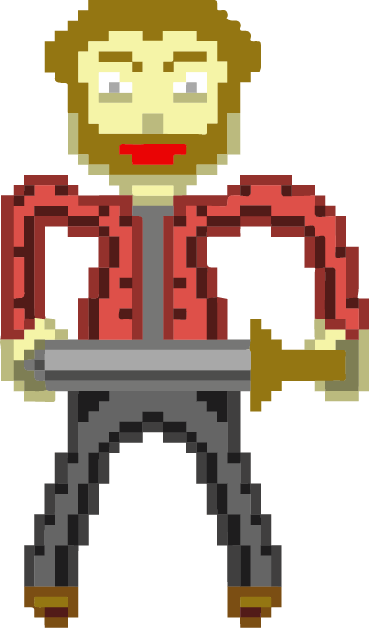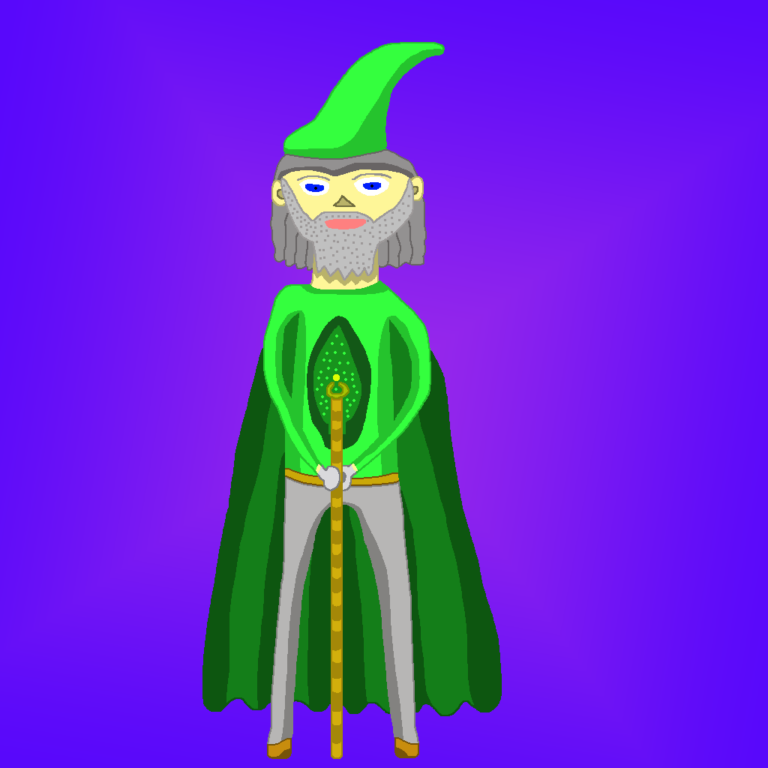Join US
Do you want to build the fantasy world you’ve always dreamed of?
Subscribe to receive notifications when a new post is out and for our monthly newsletter!
You can always unsubscribe anytime.


There are many decisions to be made when writing a book. You have to decide which characters are in and which ones are cut, which plot lines you want to focus on and which ones you’ll save for another day. All these decisions will shape your book but one of the most consequential might be deciding whether to write in 1st or 3rd person. Whichever way you go will dramatically impact how you write your tale. If you decide on the former, we’ll show you how to write in 1st person.
The central tenet of how to write in 1st person is that you, the author, write everything that ensues throughout the novel in the prism of a character. In most cases, said character is the protagonist. However, you don’t necessarily have to use the protagonist. You can instead opt for one of the other major characters or if you’re going for a twist, you can use the villain.
If you go down the route of writing in 1st person, you’ll have to structure the dialogue in a different way than you would if you went in the other direction. It’s important that you present it in a way that not just feels natural to the character but to all would-be readers. You don’t want them to read dialogue that feels stilted or out-of-place which reduces their chances of immersing themselves in the world you’ve created.
Another element of how to write in first person is capturing the character’s emotions and thoughts in a way that your audience can relate to. This is where the idea of ‘show, don’t tell’ comes in. You want your readers to easily place themselves in his shoes as he deals with all the different emotions and thoughts that arise throughout the novel.
This is article number thirteen in our series on writing a fantasy book. We have plenty more for you to peruse at your leisure, all of which are conveniently located on our blog page. Happy reading!
You’ve decided you want to write in 1st person. What do you need to know about how to write in 1st person? Before we get into that, this is a decision you must stick with all the way to the end. Don’t change it in the middle of the novel which only makes things more confusing for your readers. The change in writing perspective can turn them off which will hurt your book, even if you have a great story.
Furthermore, changing the writing perspective means you’ll have to redo all your hard work and that’s no fun! You could be looking at weeks or months of rewriting entire chapters, depending on how far you were when you decided to make the change. Writing a fantasy book is hard enough, let’s not make it any harder than it needs to be.
Pivoting onto the topic at hand, there are two styles to choose from in regard to how to write in 1st person: limited and omniscient. While both take place within the character’s point-of-view (POV), they’re used in different ways and we’ll dive into them in this section. Much like deciding whether to write in 1st or 3rd person and sticking with said decision, you’ll need to do the same here.

The limited style of writing in 1st person simply shows how the character perceives and interacts with the world. Readers see everything he sees, how he interacts with other people and objects, know what he knows, and so on. In other words, it’s almost as if the character is an avatar for them to explore the world the tale is set in. This is the most common used style.
Going with the limited 1st person does have its drawbacks though. For starters, readers can easily be steered down the wrong direction based on flawed information since they have no way of knowing what other characters know. Sometimes they can miss important clues that’s practically right in front of them due to the character’s inattention or lack of action. Clever authors use these drawbacks to their advantage by deliberately planting false information that’s meant to funnel readers and the characters towards a path they want them to go on where the truth lies waiting at the end.
The other style of how to write in first person is the 1st person omniscience. Unlike the limited perspective where the readers remain in one character’s head for the entirety of the novel, the omniscient perspective enables them to jump into the heads of multiple characters. Thus, your audience experiences the world from the viewpoints of different personalities. You can even have the same situation be viewed differently by different characters!
The advantage of the 1st-person omniscience is that your readers learn things that these characters don’t. That means they’re able to piece things together and come to a conclusion before the characters do. On the other side, readers may get false information that could yield them a different outcome due to how said characters perceive the world. How they see the world affects their ability to make decisions and different characters have different rationales for said decisions.
Regardless if you go with limited or omniscience to use in writing your novel in 1st person, both styles approach dialogue pretty much the same way. The only difference is that readers will know more than the POV characters in the latter than they do in the former. In this section, we’ll delve into structuring the dialogue in the right way in terms of how to write in 1st person.
First and foremost, it’s vital that all dialogue flow and feel naturally. This is the most important point of this section. You want it to feel like two people simply conversing, regardless of the topic. A great way to do this is to imagine how you speak in everyday situations. In casual conversations, you’re more relaxed and more likely to use informal and slang words whereas in formal ones, you’re a bit more tense and likely to use more advanced words.
When writing dialogue, have your character speak in the manner he’s used to. This is entirely dependent on who else he’s speaking to. For people he knows and has great rapport with like his friends and family, he’ll speak in his everyday voice and say words he uses regularly. For those he’s meeting for the first time or speaking with people of a higher station, he’ll speak in a formal, professional tone and use words that make him sound intelligent.

In most conversations, characters don’t simply stand around and speak. They sit down, eat, fight, ride horses, and a whole bevy of other actions. These actions help create interesting conversations and the dialogue reflects that.
This still applies when writing in 1st person only it’s a bit harder. Instead of simply saying this person did some kind of action while speaking to someone else, you have to do so through the eyes of the POV character in a way that feels natural and logical. You want your audience to feel like they’re experiencing said action which strengthens their immersion in your world.
Part of knowing how to write in 1st person is conveying the POV character’s emotions and thoughts in a way that the audience can relate to. Since they’re experiencing the world and the story through the eyes of one character, they’re exposed to whatever that character thinks and feels at that moment in time.
Much like the preceding section, you need to articulate the character’s feelings and thoughts in a natural way. You want your readers to really feel like they’re experiencing the same emotions as the character. It can be difficult to do this in 1st person but this is where ‘show, don’t tell’ comes into play.
Using ‘show, don’t tell’ here helps tie your readers to the POV character. Let’s use an example to drive home this point. Instead of merely saying I’m mad, you could write I balled my hand into a fist or I gnashed my teeth in an effort to control myself. This makes it easier for your audience to picture it in their mind which in turns helps them form an attachment to said character.

Italicized text is used to clearly illustrate to the reader that the character is either feeling or thinking something. For the former, it applies only to whatever he’s feeling inside, not physical actions that reveal said emotion. As for the latter, thoughts are always in italicized text since they reflect what the character is thinking at that point in time.
Thoughts are used in a number of ways. They can be in response to something someone said or did or an idea that popped in the POV character’s mind. You can attach emotions to these thoughts to create powerful imagery.
Let’s go with another example to show how this works. Imagine the POV character’s been dealing with a myriad of problems and he gets wind of something in a box that could solve all of them instantly. He finds the box and is standing before it.
Could the answer to all of my problems be found in that little, ugly box? There’s no way it could be as simple as that. What if it’s a trap? You see how skeptical he is that what’s in the box could be the answer he’s looking for and you can easily imagine that feeling in your mind. That’s the magic of linking emotions and thoughts together.
For those of you that decide to write your story though the eyes of one character, you need to know how to write in 1st person the correct way. Stick with this decision all the way to the end, don’t change it halfway through which will cost you a lot of time (and hard work!).
The magic of writing in 1st person is that you’re writing everything through the viewpoint of a character. That means, you see the world exactly how he perceives it which can lead to interesting situations as one little misinterpretation can fundamentally affect how he deals with something or someone.
When it comes to writing in 1st person, you need to structure the dialogue in a way that reflects that. Furthermore, you’ll have to do so in a way that feels natural both to the POV character and the audience. You definitely don’t want to write dialogue in a way that feels forced or stiff!
Capturing the character’s emotions and thoughts in a way that the audience can imagine in their mind is an essential part of knowing how to write in 1st person. ‘Show, don’t tell’ is instrumental in achieving this to great effect as your readers will feel exactly what the POV character is feeling and think what he’s thinking.
Now that you know how to write in 1st person, are you ready to create a great book in 1st person that people can’t get enough of?
Let me know what you think in the comments below. (Note: this is an account-exclusive feature).
If you don’t have one, you can register here. It only takes a few moments of your time!
Liked this article and want to subscribe? All you have to do is fill out the form below and that’s it!
Thanks for reading this and until the next time,
Sunfire
Subscribing means you receive:
You can always unsubscribe anytime.
Do you want to build the fantasy world you’ve always dreamed of?
Subscribe to receive notifications when a new post is out and for our monthly newsletter!
You can always unsubscribe anytime.